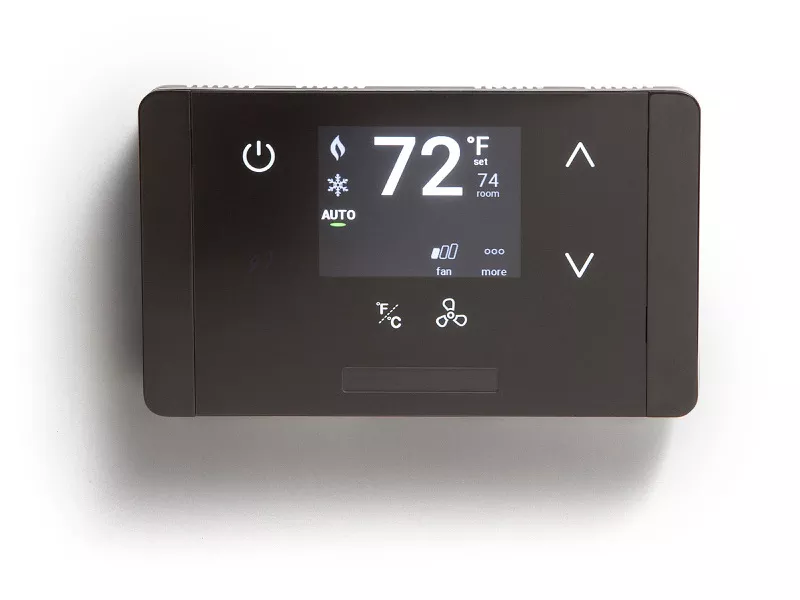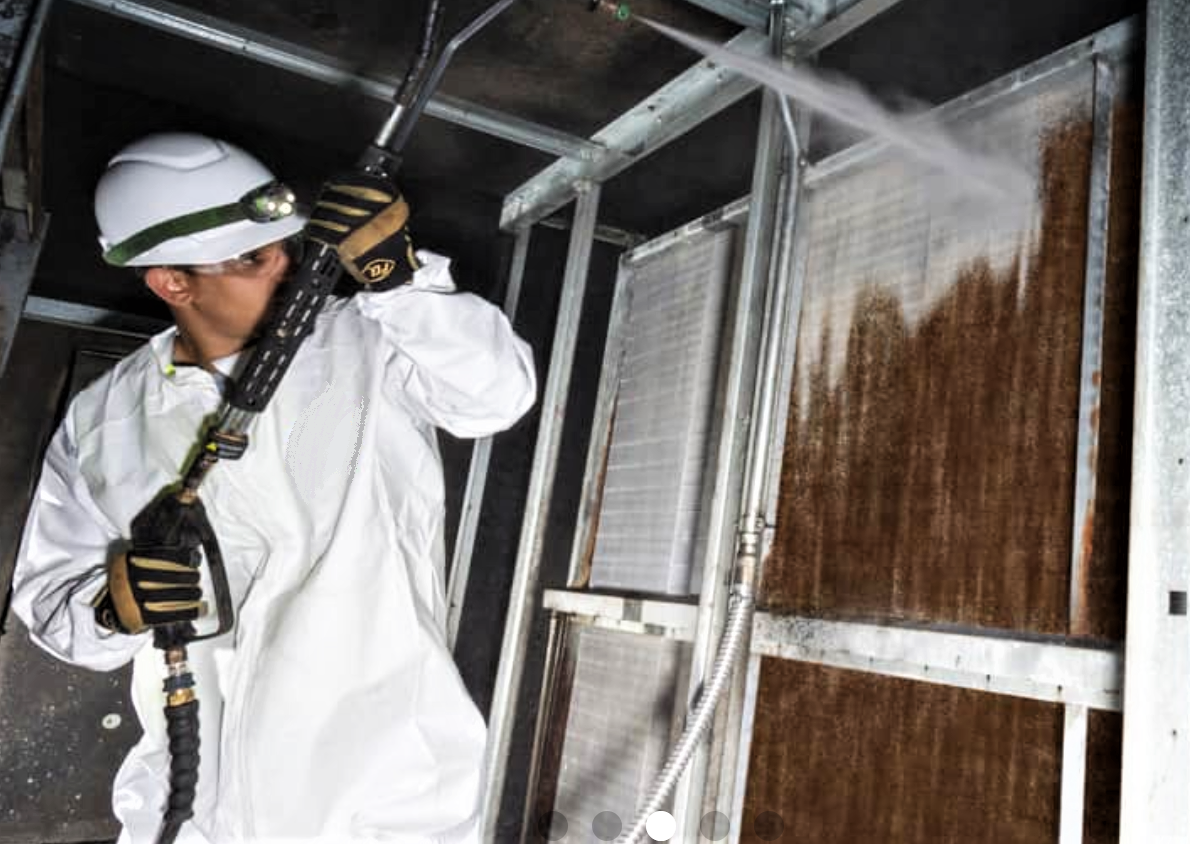As buildings prepare for reopening and a flood of information enters the market surrounding Healthy Building strategies and technologies, it can often be difficult to separate the needs from the noise and determine where to start in any given building.
Occupant interviews, air quality assessments, lighting & noise-level studies, monitoring-based commissioning (MBCx), and Retrocommissioning can certainly identify symptoms needing to be addressed, but the creation of a holistic (and effectively prioritized) path to a better building environment requires more than just a three-ring-bound report and a few short-term tactical improvements.
The simple fact: Modern Humans spend 90+% of their lives indoors, and it’s time that we make sure that these interior spaces in which we live out our lives are helping to improve (not degrade) our health and quality of life.
Key Resources for Building Professionals and the Healthy Building Curious…
Harvard’s T.H. Chan School of Public Health has been showing fantastic leadership in the Building Health Sector for a number of years, highlighted by the recent publication of Joseph Allen & John Macomber’s Healthy Buildings and their “9 Foundations of a Healthy Building”, both must-reads for anyone caring to better understand the meaning of “Healthy Buildings”.
In addition to these resources, groups and certifications such as WELL, Fitwel, and even USGBC’s sustainability-focused LEED (which just announced it will upgrade LEED 4.1 and launch several new LEED Pilot credits focused on social distancing, air quality, and infection control) all offer great learning materials and accreditation for everyone from newcomers to seasoned veterans of the Healthy Building space.
Of course, with COVID-19 front-of-mind for many building owners, we would be remiss not to mention the fantastic coronavirus-related technical resources which have been made available by ASHRAE (American Society of Heating Refrigeration and Air Conditioning Engineers), specifically—for you technical types—their Position Document on Infectious Aerosols, Position Document on Airborne Infectious Diseases, Guidance on Building Readiness for reopening, and—especially important for building owners and operators considering proven, advanced, or emerging air-cleaning technologies such as UV Germicidal Irradiation, Dynamic Active Filtration, Ionization, ROS, Ozone, etc. (several of which specifically not recommended for occupied spaces)—their Position Document on Filtration and Air Cleaning.
Where to Begin.
Begin by setting your objectives, then start with the basics.
Often, building infrastructure conversations quickly wind up in the category of “new technologies“ justified by dizzying technical arguments (sometimes valid, sometimes not), but the real crux of sustained and improved building performance typically falls into the category of “simple steps” that building owners, operators, consultants, and contractors can follow each and every day to keep a building running at peak levels of operation, efficiency, and health.
Era put out a great infographic highlighting 4 Simple Methods to improve Indoor Air Quality.
The below excerpt from the ASHRAE Position Document on Infectious Diseases, is a great starting point for a building of any use (“Occupancy Category”). To generalize the recommendations there-in…
Make sure the systems responsible for your Air are Working (and balanced) Properly.
Bring in more Outside Air.
Improve Building Filtration
Apply additional tactics (such as UV “Filtration” and/or advanced airflow design & implementation) as prudent based on the building type and risk profile.
A complete list is below, and the first thing you should notice is that the majority of the systems required to execute these strategies are likely to already be in place in your building…
A quick explanation of each strategy (skip ahead to avoid the technicals)…
Dilution Ventilation - The intake of filtered outside air to occupied building spaces—usually from Dedicated Outside Air Systems (DOAS), Rooftop Units (RTUs), Makeup Air Units (MAUs) or Outside Air-ducted Air Handling Units (AHUs). This is critical to the dilution of occupant- and building-created contaminants and the provision of healthy air in buildings. A lack of properly treated dilution ventilation is one of the most frequent causes of Sick Building Syndrome.
Central System Filtration - Key to removing contaminants from the outside and inside of any building is Central Filtration (which much be specified properly and changed at appropriate intervals). You’ve likely heard of “HEPA”, and by now may have even heard of “MERV” ratings (the standard efficiency rating for grading filter efficacy)? Wherever possible, using filters with MERV ratings of 13 or better can greatly reduce small particulate—including bioaerosols like bacteria and even some virus—contamination.
Temperature and Humidity - One of the first (and best) lines of defense in maintaining a healthy environment are temperature and humidity control. Proper control of these basic air conditions has been proven to increase employee productivity, improve human immune system functionality, and prohibit (or at least limit) the growth and viability of many common biocontaminants. If a more specific target is lacking in your building, 68 to 77 deg.F and 30% to 60% Relative Humidity (40% to 60%, if possible) is a good place to start.
Differential Pressurization - Efficient building operation usually centers around a building maintaining a slightly positive pressure at all times (this keeps air from sneaking into the building using paths which can’t be treated or controlled by building systems). Once inside, differential pressures can be used to direct air to (or from) certain areas or to prevent air (and contaminant) exchanges through occupied spaces where possible. Top Tip: Entry doors that are stuck closed or blown open by building ventilation systems are often tell-tale signs of improper building pressurization.
UV Germicidal Irradiation / UVGI (Upper-Room and Duct & Air Handler UVGI) - Ultraviolet light of certain spectrums (UV-C in this case) has been proven to effectively kill or inactivate many biocontaminants, be they bioaerosols in your air or bacterial growth on the coil of your Air Handling Unit. Properly designed, implemented, and maintained UV Systems can effectively reduce the risk of biocontaminant growth inside a building while preventing potential harmful effects of direct human exposure.
Photo Credit: Steril-Aire
Do I have to sacrifice Energy Efficiency for Building Health?
The truthful answer: It depends.
A few examples…
A (very) dirty evaporator coil from a poorly maintained 100% Outside Air Unit.
Poor or Insufficient Maintenance - One of the most common indoor environmental quality woes is a lack of system maintenance. Changing of old filters, cleaning of dirty coils, calibration of sensors, and concurrent correction of other maintenance items (such as loose belts and electrical connections) may actually reduce energy consumption while concurrently improving Indoor Air Quality (IAQ).
Ventilation - In some cases, dilution ventilation in buildings has been reduced to unhealthy levels due to poorly executed implementation of energy efficiency strategies like “Demand-Controlled Ventilation” (in which outside air is reduced to meet specific indoor environmental requirements). In this case, ventilation may need to be increased to provide building occupants with the required dilution ventilation for healthier indoor air. Increasing ventilation rates may increase energy consumption, but—if combined with proper healthy-building-minded ventilation optimization strategies—energy efficiency losses can be minimized.
Insufficient Filtration - Often buildings which have not been mindful or aware of filtration benefits utilize low-cost (and low-efficacy) filtration media. While moving to more efficient (higher MERV-rating) standard filters typically comes at the expense of fan motor energy, many active-filtration technologies are able to accomplish high-MERV filtration while decreasing differential pressure (stress on the fan motor) and even reducing filter changing intervals (saving waste and labor). Better filtration can also reduce the likelihood of clogged coils (and resulting loss of heat transfer), thus furthering—or at least sustaining—energy efficiency gains.
Lighting - Interestingly, buildings are commonly over-lit with general lighting, while task-specific lighting (and daylight) is underutilized. Combine this with the poor color rendering and temperature (color) specification that are all-too-common in commercial spaces, and buildings are most often still over-consuming and under-performing in the category of lighting health. Properly designed, new fixtures with significant improvements in color rendering and light/power (lumens/watt) efficiencies can be installed and combined with daylight harvesting strategies, high-efficiency task lighting, and plug load management to (coupled with effective color/temperature selection) improve Indoor Environmental Quality and greatly reduce energy consumption.
Will Things Ever Be the Same?
Probably not, and—at least in the case of buildings—we’d suggest that this may be a good thing.
Ever seen an entire audience feeling drowsy during a meeting, watched an illness run through your office or classroom like a wildfire, or found yourself showing signs of eye strain during a document review? There may be more afoot than just poor presentation skills or a bad case of “the Wednesdays”…your building’s health may be leaving its mark on your and your occupants’ wellness and productivity.
There is a very real, scientifically-based argument for not just the wellness benefits of Healthy Buildings, but also the economic benefits there-of. It may have taken a global pandemic to awaken the last of the building ownership, management, tenant, and occupant masses who hadn’t yet made indoor health a focus, but—now that they’re awake—we wouldn’t expect the world to fall back asleep any time soon.
We are all #InThisTogether. Let’s make sure we come out stronger, better, more efficient, and healthier than when we went in.
Top 6 Healthy Building Solutions
Wondering what similar buildings are doing to improve building health? Here are the Top 6 Building Health Solutions being implemented by Era Building Solutions clients this month…
Indoor Environmental Quality Planning
Filtration Upgrades and UV Germicidal Irradiation (UVGI)
Proper Maintenance
Air Handing Unit Restoration
Controls Tuning & Monitoring-Based Commissioning (MBCx)
Lighting Upgrades














